Clipart tagged: ‘small birds’
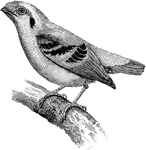
A Broadbill Sitting on a Tree Branch
"The plumage in the Calyptomena viridis of the Indo-Malay countries is bright green, with large black…
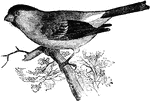
Cassin's Bullfinch
"Pyrrhula cassini. Cassin's Bullfinch. Above, clear ashy-gray; below, cinnamon-gray; rump and under…
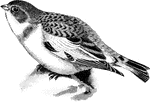
Snow Bunting
" The Snow Bunting (Plectrophenax nivalis), with its black, chestnut, and white plumage, that becomes…
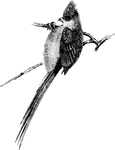
Cape Coly
"Colius capensis, or Cape Coly, has two stripes of black on the back enclosing one of white, the bare…
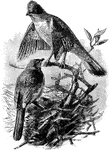
Two Grey "Coly-Shrike" Birds Sitting on Tree Branches
"Hypocolius ampelinus, Grey "Coly-Shrike", the plumage is soft, with characteristically stiff shafts…

Tree Creeper
"Certhia familiaris, the Tree Creeper, the coloration of both sexes is brown, black, rufous, buff, grey,…
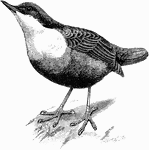
Dipper
"Cinclus aquaticus, Dippers, the colour above is normally greyish-black or brown; the lower parts are…

Paradise Flycatcher
"Terpsiphone paradisi, Paradise Flycatchers, have fine crests, shorter in the female; while fleshy wattles,…
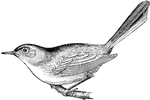
Blue-gray Gnat-catcher
"Grayish-blue, bluer on the crown, hoary on the rump, the forehead black, continuous with a black superciliary…
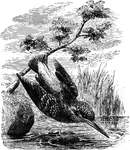
Common Kingfisher
Alcedo Ispida. European Kingfisher. Small bird, upper parts blue-green; under parts orange; rump and…

Land-Rail
The Crex pratensis, Land-Rail, or Cork Crake, is mostly brown with the upper parts spotted, a blue-green…
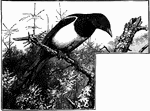
A Magpie Sitting on a Tree Branch Looking Down While Surrounded by Other Trees
"The Pica rustica, or Magpie, extends through the Palaearctic Region, and reaches Formosa and North…
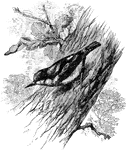
Nuthatch
"The colours in Sitta caesia, (Nuthatch) which ranges over nearly all the Palaearctic and Indian Regions,…
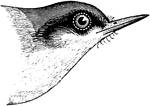
Brown-headed Nuthatch
"No black cap or white stripe on head. Upper parts dull ashy-blue; under parts sordid or muddy whitish.…
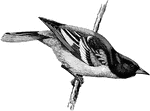
Baltimore Oriole
icterus baltimore, Baltimore Oriole, are glossy black, with yellow, bay, or orange patches-especially…

Indian Pitta
"Pitta brachyura, the Indian Pitta, has plumage that exhibits vivid scarlet, blue, and green tints,…
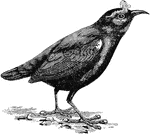
Wattled Pittas
"Philepitta, peculiar to Madagascar, which have bare orbits surmounted by a green caruncle in the male,…
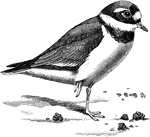
Ringed Plover
"Aegialitis hiaticola, the Ringed Plover, Sand-Lark, or Stone-runner, mistakenly called the "Ring-Dotterel"…
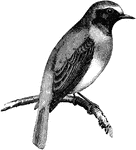
Redstart
"Our Ruticilla phoenicurus,the Redstart, is grey, with brown wings, chestnut breast, rump, and lateral…
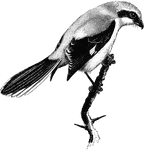
Great Grey Shrike
"The Lanius excubitor, Great Grey Shrike, lax plumage is either black, grey, and white, or is varied…
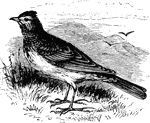
Skylark
"Sky-Lark. Upper parts grayish-brown, the feathers with darker centers; under parts whitish, tinged…
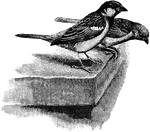
Two House Sparrows, One Looking Down, One looking Straight, Sitting on the Top and Edge of a Structure
"Passer domesticus, House Sparrow, The sexes may be similarly coloured or very different, the hues being…
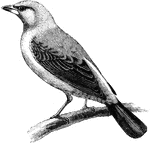
Brazilian Tanager
"Rhamphocoelus brasilius, the Brazilian Tanager, ...are chiefly small in size; the sexes are commonly…
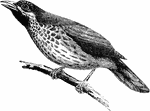
Babbling Thrush
"Timelia maculata, the Babbling Thrush, sexes are commonly alike, the plain rufous coloration being…

Wood Thrush
"Wood Thrush. Upper parts, including the surface of the closed wings, tawny-brown, purest and deepest…
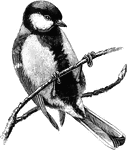
Great Titmouse
"Parus major, the Great Titmouse, are olive, brown, or grey, varied with black, white, chestnut, or…
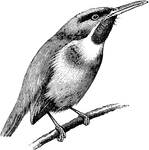
Tody
"Todus viridis, Tody, has coloration that is green, with a red throat, yellowish-white or pinkish under…
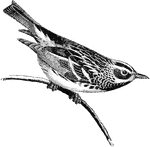
Black and White Warbler
"Mniotilta varia, the Black and White Warbler, The general coloration is olive-green, grey, or slaty-blue,…
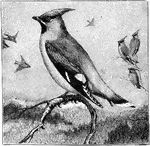
One Waxwing Sitting on a Branch in the Forefront with Three Waxwings Sitting on Branches and Four Flying Around in the Background
"Both sexes of our irregular winter-visitor the Waxwing (Ampelis garrulus) are silky greyish-brown,…
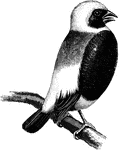
Weaver-bird
"Pyromelaena flammiceps, the Weaver-birds, the coloration of these rather small birds is most striking,…
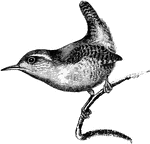
Wren
"Troglodytes parvulus, Wren, the coloration is ordinarily brown, with a great tendency to barring; spots,…

Winter Wren
"Winter Wren. Above brown, darker before, brighter behind, most of back, together with tail and inner…